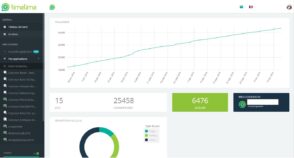


Business line segmentation could be applied in exceptional cases, so that a segment of an MNE that meets the minimum turnover and profitability thresholds on a standalone basis would be within scope of the new rules.Importantly, this threshold will be reassessed after seven years with a view to decreasing it to EUR10 billion (approximately $11.8 billion). Scope: Compared with the Pillar One Blueprint, the scope of the measures has been significantly revised and now covers multinational entities (MNEs) with global turnover (i.e., total income the business generates) above EUR20 billion (approximately $23.5 billion) and profitability above 10% (i.e., profit before tax/revenue) - rather than focusing on consumer-facing businesses and automated digital services.A fundamental goal of this pillar is to grant additional taxing rights to market/user jurisdictions. Pillar One introduces a new approach to profit allocation between jurisdictions, departing from the reference to physical presence only. Hence, it comes as no surprise that the BEPS 2.0 project has received such strong support from many G7 and G20 country leaders, and significant political urgency with respect to the measures is driving the implementation timeline. This new tax development comes when governments are struggling to rebuild their budgets and the global economy is attempting to recover from the COVID-19 pandemic. Pillar Two Model Rules,⁴ containing the model legislation for jurisdictions to use when introducing elements of Pillar Two, were released in late December 2021. The implementation timeline, presented in the appendix to the October Statement, is ambitious, with the expectation that most rules will come into effect as early as 2023. The October Statement has been agreed upon by 137 of the 141 jurisdictions participating in the IF and subsequently endorsed by the G20 finance ministers and the G20 leaders. The most recent statement was published on October 8, 2021, (October Statement)³ and outlines the agreed key components of each Pillar. The OECD/G20 Inclusive Framework on Base Erosion and Profit Shifting (IF) introduced a two-pillar solution and issued two specific statements. They have been grouped into two proposals, referred to as pillars - one on nexus and profit allocation (Pillar One) and another on ensuring a minimum level of taxation (Pillar Two), documented in the Pillar One and Pillar Two Blueprints published in October 2020.² The new BEPS 2.0 measures initially aimed to address tax developments arising from the digitalization of the economy and have been one of the priorities of the Organisation for Economic Co-operation and Development (OECD)/G20¹ Inclusive Framework on BEPS in recent years, following the release of the BEPS Action 1 Report in 2015.


 0 kommentar(er)
0 kommentar(er)
